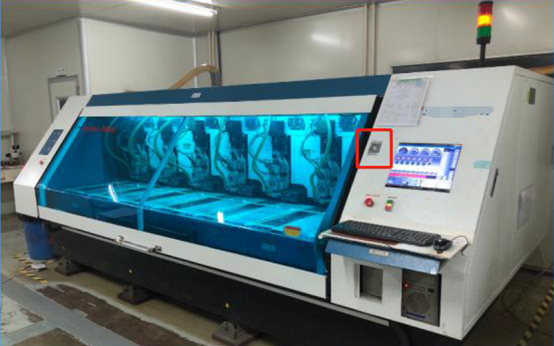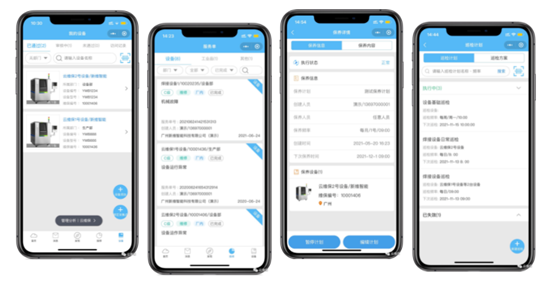With the advent of the digital age, production equipment is becoming increasingly large-scale, automated, and intelligent; production process problems in enterprise production processes are also increasing. Enterprises are becoming more and more dependent on equipment, while their dependence on people is decreasing. Many 3D jobs ("dirty, difficult, and dangerous") are gradually being replaced by smart devices and robots, and factories are increasingly moving towards an unmanned era.
The resulting equipment management has also ushered in new requirements for the new era.
The emergence of various new equipment, new technologies, and new tools, such as automatic early warning, automatic alarm, paperless inspection, remote diagnosis, VR technology, and other new generation information technologies have also entered the field of equipment management. The existing equipment management systems are far from meeting the daily production needs. The traditional equipment inspection, maintenance, repair, and daily production and operation standard processes have encountered challenges in the new era. Many traditional industrial production enterprises are facing new equipment management problems.
How can we keep up with the pace of the new era, meet the new requirements of equipment management, and manage the entire life cycle of production equipment? Our cloud maintenance teacher will share how to achieve digital transformation and upgrading of production equipment management through six steps driven by digitalization.
The first step is to paste the QR code on the device
The code is attached and the file is put into the system to realize the electronicization of production equipment assets. The information ledger of all equipment is sorted out, and a unique QR code is given to each equipment according to the equipment ledger. The information of each equipment can be known by scanning the code. The detail of the information depends on the detail of the existing data. If it is less, it can be enriched from less to more, day by day. However, it is very important to start, and gradually realize that the equipment files, repairs, maintenance records, related documents, etc. can be viewed by scanning the code to meet the daily management needs of the equipment.

The second step is to standardize the process
Implement the systematization of equipment management. Build an equipment management system or integrate equipment management modules to institutionalize, process and standardize equipment management activities from equipment design, procurement, use, maintenance, scrapping, spare parts management, cost management and other activities. Implement classified management of equipment, implement equipment life cycle management, implement PDCA management closed loop, realize process-driven, online tasks, online personnel, and transparent work.
The third step is mobile maintenance
Realize the digitization of equipment records. Implement mobile management by establishing an equipment management APP, timely collect the operating status of on-site equipment, record point inspection conditions, and promptly dispatch preventive maintenance work orders and abnormal fault maintenance work orders.

Step 4: Monitored operation
Realize the digitization of equipment operation. Useful information about equipment operation is collected and monitored through the equipment's own data interface (PLC, etc.) or external sensors, such as continuous operation data such as current, voltage, speed, temperature, lubrication, vibration, start and stop time, feed rate, etc., to continuously monitor equipment operation, realize functions such as control of equipment efficiency, control of product quality stability, early warning and automatic disposal of abnormalities and faults, etc.
Step 5: Equipment interconnection
Realize lean production management. Through 5G technology and Internet of Things technology, all intelligent equipment can be connected to coordinate the production optimization arrangement of similar equipment and the local processing of maintenance service orders, improve equipment utilization and reduce logistics costs. Realize multi-factory and cross-regional collaborative management.
Step 6: Installation and use: Factory maintenance
Finally, by registering and using the cloud maintenance and factory maintenance SaaS service applet, the company can code and file production equipment on the system, standardize daily equipment management workflows, fully mobile maintenance and real-time production safety operation monitoring, and enable data interconnection and interoperability among factory production equipment, allowing factory managers to review production data at any time and make monthly equipment scheduling plans based on the data, thereby realizing digital decision-making for enterprise production.
In summary, the first three steps realize the data management of equipment management itself, the fourth and fifth steps realize the harmonious and unified management of production and equipment, and the sixth step realizes the implementation and execution management of the entire life cycle of equipment from theory to practical application of digital transformation and upgrading of production equipment.
This is just a simple step-by-step method. In fact, each step requires a lot of specific work to be implemented, and can be further refined and adjusted according to the specific circumstances of each manufacturing enterprise.
Cloud maintenance and SaaS software for factory maintenance provides industrial enterprises with one-stop management of daily inspection, maintenance, care, and repair reporting of factory production equipment, enabling paperless inspection and efficient maintenance, and meeting the needs of information management of production equipment.
Previous article:A powerful tool to improve wiring cabinet work efficiency - factory-calibrated configurable IO modules
Next article:Rockwell Automation and Inspur join hands to accelerate the implementation of the Industrial Internet and enable high-quality economic development through industrial digitalization
- Molex leverages SAP solutions to drive smart supply chain collaboration
- Pickering Launches New Future-Proof PXIe Single-Slot Controller for High-Performance Test and Measurement Applications
- CGD and Qorvo to jointly revolutionize motor control solutions
- Advanced gameplay, Harting takes your PCB board connection to a new level!
- Nidec Intelligent Motion is the first to launch an electric clutch ECU for two-wheeled vehicles
- Bosch and Tsinghua University renew cooperation agreement on artificial intelligence research to jointly promote the development of artificial intelligence in the industrial field
- GigaDevice unveils new MCU products, deeply unlocking industrial application scenarios with diversified products and solutions
- Advantech: Investing in Edge AI Innovation to Drive an Intelligent Future
- CGD and QORVO will revolutionize motor control solutions
- Innolux's intelligent steer-by-wire solution makes cars smarter and safer
- 8051 MCU - Parity Check
- How to efficiently balance the sensitivity of tactile sensing interfaces
- What should I do if the servo motor shakes? What causes the servo motor to shake quickly?
- 【Brushless Motor】Analysis of three-phase BLDC motor and sharing of two popular development boards
- Midea Industrial Technology's subsidiaries Clou Electronics and Hekang New Energy jointly appeared at the Munich Battery Energy Storage Exhibition and Solar Energy Exhibition
- Guoxin Sichen | Application of ferroelectric memory PB85RS2MC in power battery management, with a capacity of 2M
- Analysis of common faults of frequency converter
- In a head-on competition with Qualcomm, what kind of cockpit products has Intel come up with?
- Dalian Rongke's all-vanadium liquid flow battery energy storage equipment industrialization project has entered the sprint stage before production
- Allegro MicroSystems Introduces Advanced Magnetic and Inductive Position Sensing Solutions at Electronica 2024
- Car key in the left hand, liveness detection radar in the right hand, UWB is imperative for cars!
- After a decade of rapid development, domestic CIS has entered the market
- Aegis Dagger Battery + Thor EM-i Super Hybrid, Geely New Energy has thrown out two "king bombs"
- A brief discussion on functional safety - fault, error, and failure
- In the smart car 2.0 cycle, these core industry chains are facing major opportunities!
- The United States and Japan are developing new batteries. CATL faces challenges? How should China's new energy battery industry respond?
- Murata launches high-precision 6-axis inertial sensor for automobiles
- Ford patents pre-charge alarm to help save costs and respond to emergencies
- New real-time microcontroller system from Texas Instruments enables smarter processing in automotive and industrial applications
- About bus conflicts (Part 2)
- Share: Analysis of the problem of poor PCB process of washing machine control circuit board
- PMOS is turned on
- Download: In-depth analysis of the impact of the Internet of Things
- Intelligent toilet constant temperature circuit
- CCS compiles and generates binary files
- Mobile phone calculators are all dead: What is 10% + 10%? [Have you ever calculated it?]
- 【TI recommended course】# TINA-TI training course#
- Review of "My Life With You 2019"
- Qinhengwei CH549L-Air touch sensitivity debugging

 Chip Manufacturing: A Practical Tutorial on Semiconductor Process Technology (Sixth Edition)
Chip Manufacturing: A Practical Tutorial on Semiconductor Process Technology (Sixth Edition) 開關電源專業英語
開關電源專業英語
















 京公网安备 11010802033920号
京公网安备 11010802033920号